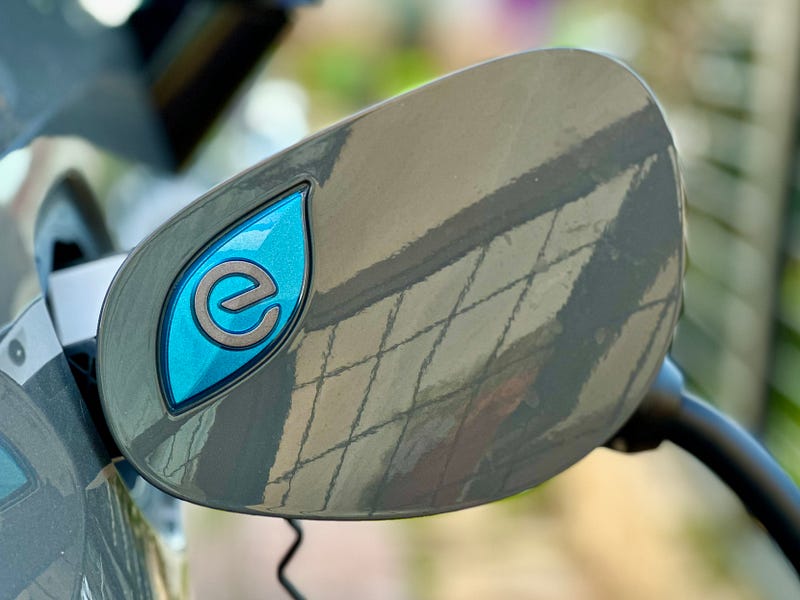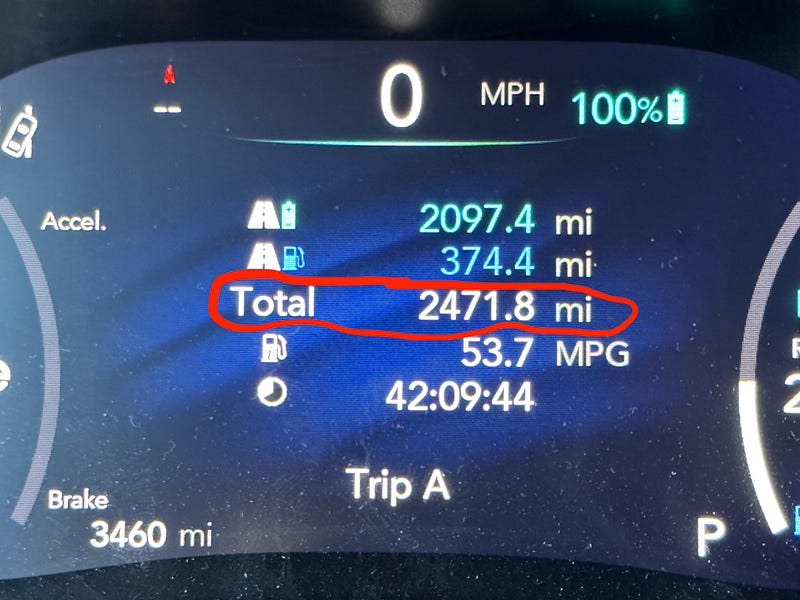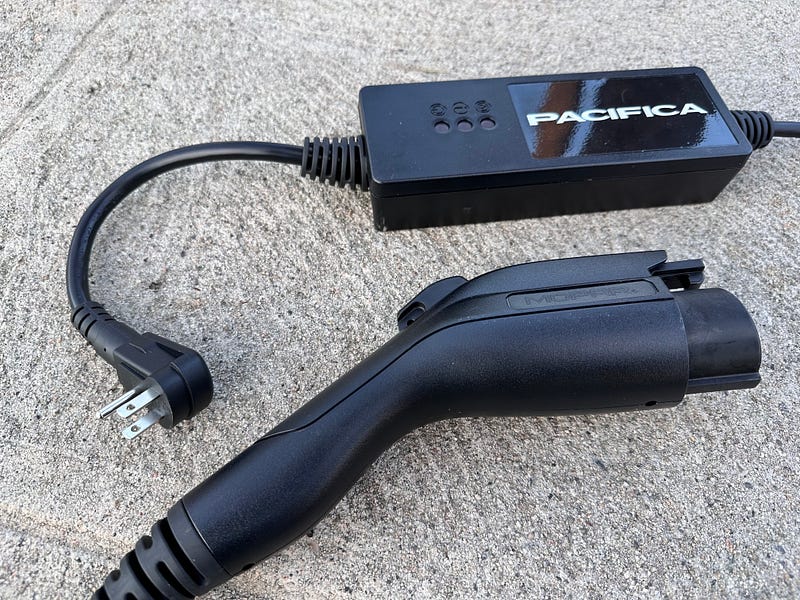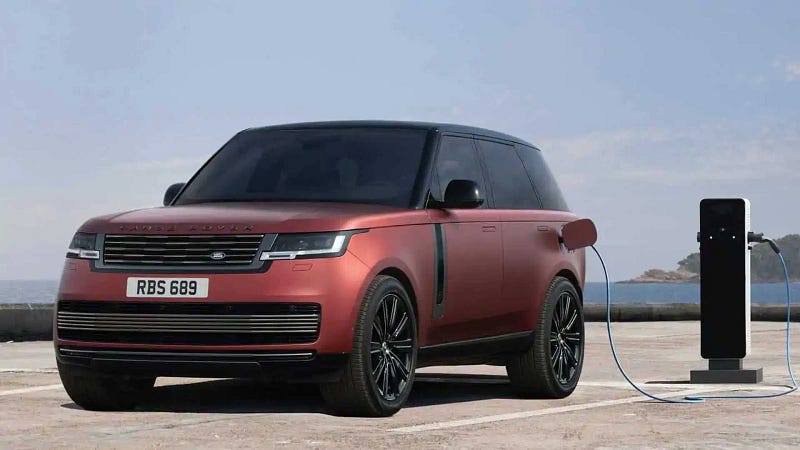Want An EV With No Range Anxiety? It’s A Plug-In Hybrid
Done right, PHEVs are EVs 80–90% of the time

Now that most of the EV early adopters with money to spare have done their early adopting, the challenge is to get everyone else to take the plunge into electrified driving. This second phase has been more difficult than the Biden administration, EV-enthusiastic car manufacturers, and environmentalists had been hoping — and for good reason. While early adopters are willing to endure some troubleshooting, extra planning, and additional costs and hassles to be in the first wave of EVs, many mainstream car buyers just want an EV that basically works (and refuels) like an internal combustion engine (ICE) car does, but with electricity. Therein lies the problem — America’s electric charging infrastructure is nowhere near as widespread, reliable, fast, and convenient as it is for gas, which enjoys a decades-long head start and all the ubiquity and familiarity that entails.
This is where range anxiety becomes a factor. Studies have shown that for potential EV buyers, the main reason not to buy an EV is the fear that if they’re running low on juice, they won’t be able to find a conveniently located charging station. And if they do, they are worried that the charging station won’t work, will take too long to adequately charge their EV, or will be occupied by another EV in the midst of a long charging session. Due to America’s fairly anemic public charging infrastructure and how poorly it’s been maintained, range anxiety is a valid (though somewhat overblown) concern, especially for those who don’t have home chargers, have long commutes, or frequently go on road trips.
Fortunately, there are over 32 models of EVs from a number of carmakers that are available today that are impervious to range anxiety. In fact, they suffer from none of the other downsides of today’s EVs. You probably haven’t heard of them because they aren’t quite called EVs — they have instead been given a deceptive name that obscures what they really are. These magical, range-defying EVs are called plug-in hybrids, or PHEVs. And after driving one for most of a year, it’s shown me that a PHEV that is frequently charged is actually an EV the vast majority of the time — 80–90% of the time, in my case. But it can become a hybrid when you need it to — which, turns out, isn’t nearly as often as you’d think.
PHEVs Are Heavy On the EV

According to Kelley Blue Book, the average American drives about 37 miles a day, while the American Automobile Association puts that estimate at 31 miles. My Chrysler Pacifica plug-in hybrid — the only PHEV minivan sold in America today — has a 13 kWh battery that provides an EPA-tested 32 miles of all-electric driving, which is roughly its MPG when using gas. I live in a major city, and importantly, I have a house with a 240V charger I bought with the help of a $1,000 local rebate, which covered the cost of installation. My household’s weekday driving mostly consists of taking my older daughter to school, running errands, going to various appointments, CostCo/grocery runs, and my wife’s 10-mile-roundtrip commute to work a few days a week. On the weekends, we are generally taking the kids to parks, activities around town, birthdays, and maybe some shopping excursions. In my experience, we rarely drive more than 32 miles in a day unless we’re making the roughly 40-mile drive to my brother’s house, and we sometimes go two days without charging.
All this means that 80–90% of the time, I am driving my PHEV using only electricity. My PHEV is a full EV 80–90% of the time on just 32 miles of all-electric range. On average, my wife and I drive 1,000–1,500 miles between fill-ups. And get this: when we do gas up, we only put about 6–7 gallons of gas in the car, not the full 16.5 gallons the Pacifica PHEV can hold. That’s because on a full tank, we would go so long between fill-ups that the gas in the tank sometimes got stale, prompting the Pacifica to run in hybrid mode whenever you’re driving (regardless of how much the battery is charged) to burn through the gas quicker so you’ll refill it with fresh gas. When we did fill the tank all the way, we hit close to 2,500 miles — and would’ve gone much longer — before the Pacifica switched to all-hybrid mode. So now we put less gas in the tank than I used to put in my 2015 Prius hybrid — a smaller car that held 7.5 gallons that I used to fill up every 350 miles or so — while driving the Pacifica roughly three times farther.
This is why I think PHEVs are misnamed. If you didn’t know better, you might even think that a plug-in hybrid is worse than a standard hybrid. After all, isn’t it better to have a hybrid that doesn’t need to be plugged in? But the reality is that you plug in a PHEV like you plug in an EV so it can be driven like an EV. And if you are anything like me, and if average daily mileage data is accurate, it means that most people who own a PHEV with more than 30 miles of electric range and have easy access to charging would really be driving an EV the vast majority of the time, paying less than half what they would pay for the gas equivalent and more than tripling the time between gas station visits. But unlike with EVs, if your PHEV’s battery runs out, you can keep driving it like a standard hybrid, without a whiff of range anxiety.
For people with range anxiety who are hesitant to go full EV, doesn’t an EV that can use gas when your battery runs out sound like the perfect option? And with PHEVs, the benefits don’t stop there.
No 240V Charger? No Problem

The biggest reason not to own an EV right now is if you can’t reliably charge it at home, which usually entails having a house with a driveway. This is a real bummer since that rules out the more than 100 million Americans who live in apartments, which doesn’t include the tens of millions of people who rent houses and may not be able to convince their landlord to install a charger. And unfortunately, America’s public charging infrastructure is not yet extensive, reliable, or fast enough to be your sole charging option. Yes, the Biden administration is subsidizing the construction of more charging stations, DC fast charging is becoming more common, Tesla is opening up its chargers to non-Tesla EVs, the range of EVs is increasing, and there are some exciting technological developments on the horizon like solid state batteries, but all of that could take years before it actually makes charging away from home as convenient as pumping gas.
However, PHEVs avoid nearly all of these issues. Of course, there’s the fact that a PHEV is still drivable with an empty battery, so it’s not the end of the world if a charging station is occupied, broken, or non-existent. But the fact that a PHEV battery is much smaller than a typical EV’s battery also changes the equation.
PHEVs all come with a rudimentary 120V charger that plugs into a standard 120V wall outlet. With the one that came with my Pacifica, I was able to fully charge its 13kWh battery in about twelve hours, which I think most people could achieve most of the time if they plugged their PHEV in when they got home from work and charged it overnight. This means that if you don’t always have access to a public charger, don’t have a 240V charger at home because you are a renter, or simply aren’t yet willing to make the investment in a 240V charger, you may still be able to fully recharge your PHEV every day and drive it like an EV most of the time as long as you can park near a wall outlet (unfortunately, the Department of Energy warns against using an extension cord with a 120V charger).
But even if you aren’t always able to charge your PHEV, I suspect you’ll want to. If you hardly ever charge your PHEV, you will have wasted a considerable amount of money on a battery you don’t use while spending way more to drive it as you increase pollution, which should all be strong motivators. And if you are able to install a 240V charger at home, I imagine it won’t be long until you find yourself browsing Amazon for one.
PHEVs Are the True Bridge to EVs

There is a fair bit of anxiety and confusion in the world of electric vehicles today, depending on who you listen to. Some reports claim that demand for EVs has fallen off a cliff, with dealerships struggling to get EVs off their lots and carmakers scaling back their EV plans due to lack of demand. Other experts claim that demand for EVs has simply transitioned from “mind-blowing” to “really damn good” as the rate of EV adoption slows but still maintains strong annual growth as buyers shift from early adopters to everyone else as EV sales continue to set records and make up a growing percentage of new cars sold. And many of these mainstream buyers have understandable concerns about range anxiety, public charging, and the inability to charge at home if you are a renter.
Amidst this cloud of uncertainty, gas/electric hybrids are receiving renewed interest and rising sales as a “bridge” technology to full EVs. Probably no one is happier about this than Toyota, which has resisted making the transition to EVs as a purposeful strategy while expanding their hybrid options. In response to the perceived decline in EV sales, the former CEO of Toyota, Akio Toyoda, has been patting himself on the back for his prescience, saying that “people are finally seeing the reality” of EVs and that his hybrid-first strategy reflects that “there are many ways to climb the mountain that is achieving carbon neutrality.”
However, I think touting hybrids as a “bridge” to EVs is way off. I’ve owned two Toyota Priuses, and I can say for certain that driving a hybrid is nothing like driving a PHEV or an EV, nor does it move you significantly closer to owning one. That’s because in nearly every way, a hybrid is simply a gas car that gets better mileage. The gas motor of a hybrid is running nearly all the time you are driving it, so you don’t get the quiet, quick-accelerating, vibration-free experience of EV driving. You don’t learn anything about what it’s like to charge a car at home or out in the world, and you even have to fill a hybrid up about as often as a comparable ICE car (though you buy less gas when you do). The tank in my last Prius held about 7.5 gallons, which was good for about 350 miles, which was roughly the range my ICE Toyota Camry got on roughly twice as much gas.
Henry Ford is credited as saying that before the automobile was invented, most people would’ve said that the best way to improve their transportation experience would be getting a faster horse, not a paradigm-shifting technology like the car. Hybrids are that faster horse — or, more accurately, a horse that requires less food — not a meaningful step towards fully electric driving (or having no horse at all in this analogy). Getting more miles per gallon is great — by my estimate, having the extra battery improved the mileage of my Priuses by about 50%. I honestly think that all ICE cars sold today should at least be hybrids — the Toyota Camry, the best-selling car in America, is going hybrid-only in 2025. But a car that still requires gas to be driven and has you at the gas station just as often as with an ICE car isn’t much of a bridge to a world where cars no longer use gas at all.
On the other hand, PHEVs give you that EV experience much of the time, and will likely leave you hungry for more. After experimenting with slow 120V home charging and public charging for a week, I wanted 240V charging and began researching my county’s charger incentives so I could quickly take advantage of them in case they went away. After spending 80–90% of my time driving all-electric, I’m now annoyed when I have to use gas, especially knowing that a gallon of gas costs more than twice as much as the electric equivalent. When my minivan switches to gas or I’m driving my ICE Honda CR-V, I notice and dislike the motor sound and vibration, which I now understand is simply wasted energy. I was shocked to recently learn that a properly maintained gas engine operates at just 30–35% efficiency, meaning that two-thirds of the money you spend on gas is wasted! Meanwhile, EV engines utilize about 77% of the power they get from the grid, while also regenerating power through braking that would otherwise be lost as heat and dust from brake pad friction. After learning stuff like this and experiencing the differences between electric and gas driving, sticking with internal combustion engines — which, as its name states, is just harnessing some energy from controlled, dirty little explosions — seems not just dumb, wasteful, more expensive, and bad for the environment, but also a worse driving experience.

In addition, the controls in PHEVs are largely identical to their ICE and hybrid variants — a big advantage for the EV-hesitant. Following Tesla’s example, most carmakers are aiming to make their EVs seem more futuristic by having the majority of the car’s controls only accessible via a large touchscreen. I’ve talked to Tesla owners who say they love the minimalist look of a dashboard free of buttons, knobs, and dials, but having to take your eyes off the road to tap through potentially multiple screens to access basic functions seems like a hazard and an obstacle to adoption. My parents have owned a Tesla Model 3 for a few years but my mother refuses to drive it because she hasn’t learned how to access all its functions and is nervous about trying to find them while driving. It’s pretty rare for a car to have such a significant learning curve — it doesn’t take more than a few minutes to get the hang of driving a rental car. And even though buttons and dials might have once been a necessity, easily accessible, easy-to-understand manual controls are also a big win for intuitive design. I hope that carmakers begin adding back knobs and buttons, but in the meantime, I’m very happy that my Pacifica still has physical controls for climate control, gear shifting, volume, parking assist, etc. The touchscreen allows for a redundant way to access some of these controls but is mostly for mapping, infotainment, and Apple CarPlay.

Personally, I think a carmaker would have a huge hit on their hands if they made a PHEV that got 100 miles of all-electric range instead of the common one-gallon-of-gas equivalent (the PHEV Land Rover Range Rover leads the industry at 51 electric miles). One hundred miles would more than cover an average person’s daily driving and would likely alleviate the need to charge every day, which would be a boon to people who don’t have home chargers. That range would also cover the majority of medium-ish trips where you’re driving 45–60 minutes each way. Gas would be reserved for the small number of long trips one takes in a year that are more than two hours each way. Considering my driving habits, I would happily trade gas tank volume for more battery, especially since I never fill up my tank all the way. My PHEV Pacifica has a 16.5-gallon tank, but I would much rather have an 11.5-gallon tank in exchange for three times the battery range (the difference in tank size between the ICE and PHEV Pacificas is 2.5 gallons). Maybe the economics of this don’t exactly work considering the cost of batteries, the length of the average daily drive, or that someone who wants 100 miles of EV range would more likely just buy a full EV. But a car like this would truly be a range anxiety killer and a car for all occasions, including cross-country trips.
And for EV absolutists and environmentalists who think that anything less than a full EV is a step backwards, a 100-mile PHEV would probably be an EV 95–99% of the time, which is almost as good as you can get. Julia Poliscanova, a senior director at Europe-based clean transport campaign group Transport & Environment, has said that small, fuel-efficient gas cars are better for the environment than larger, heavier PHEVs whose owners may not charge them regularly, but it’s wishful thinking to believe that a small car will fit most people’s needs, particularly families. I consider myself a serious environmentalist and want the transition to EVs to happen as quickly as possible, but not more quickly than possible. And at this point, there are a huge number of people for whom an EV is not a viable option due to their driving needs or, more likely, their inability to quickly or reliably charge an EV at home or on the go. And unfortunately, it may be years before America has a fast, reliable, nationwide charging network.
In the meantime, I think PHEV carmakers, the public, and the environment would benefit greatly from a change in branding and classification that would more accurately reflect what a plug-in hybrid really is and how they are actually driven. I’m no marketing expert, but EV hybrid seems like a good potential candidate. The name better reflects how, in spite of its relatively small electric range, an EV hybrid should be regarded as an EV first since that is how it will mostly be driven under the right circumstances, with the hybrid engine acting as a robust backup system for longer trips or if you’re unable to charge. The name EV hybrid would be even more fitting for the hypothetical 100-mile PHEV I described before.
While I’m sure there are people who underuse the EV capabilities of current EV hybrids (companies like Jeep and Kia dispute this), I’m glad that states like California will count EV hybrids as “zero-emission” vehicles in their ambitious plans to phase out the sale of new ICE cars by 2035, with a carve out that 20% of new cars can be EV hybrids that get over 50 miles of electric range. I think there are some people who, no matter how good batteries or the charging network gets, will remain skeptical of the EV paradigm shift and will continue to suffer some form of range anxiety — no matter how unfounded — that will make them reluctant to give up gas. But after driving an EV hybrid, my guess is that they will quickly learn that on the vast majority of days, going electric is way easier — and way better — than they had imagined.
